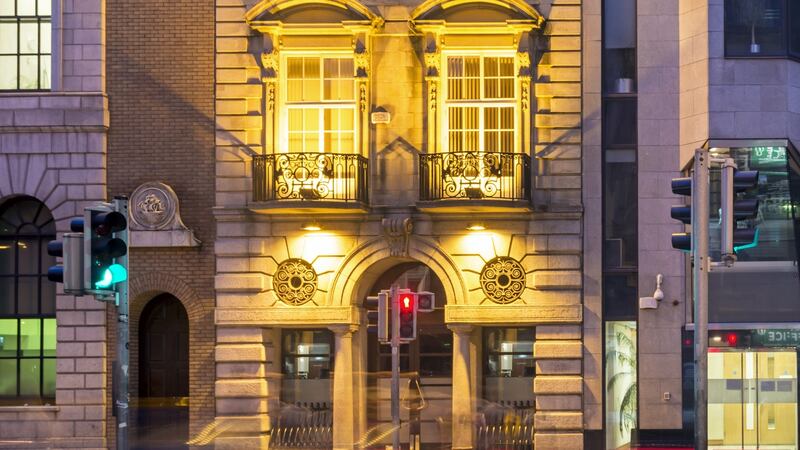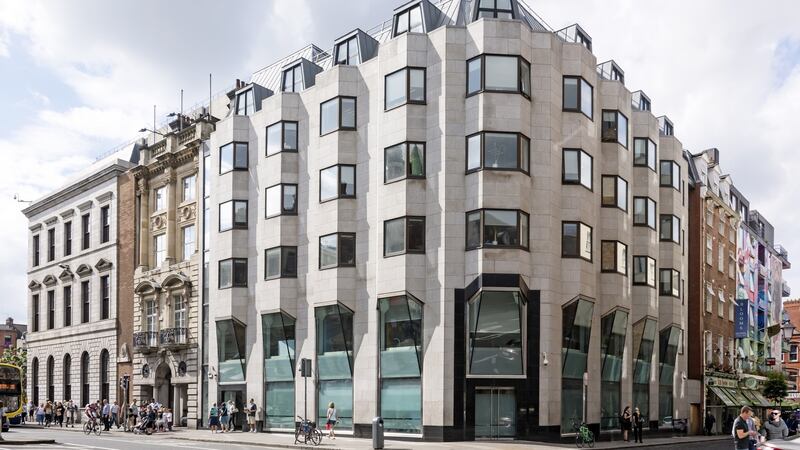The much anticipated sale of the Central Bank headquarters on Dublin’s Dame Street is finally to go ahead on October 19th. The iconic tower building and two interlinked blocks as well as two further adjoining buildings are expected to make around €80 million, according to the selling agents Lisney.
With the sale of the landmark building on the cards for some time, the Central Bank commissioned a number of due diligence reports on possible options open to new owners.
One report prepared by architects Henry J Lyons underlined the undoubted scope to create more activity on the substantial plaza area around the main building by introducing more amenity attractions and retail facilities. Another option would involve the conversion of the tower block into a high profile hotel. Given the impending pedestrianisation of part of College Green, businesses will be looking for opportunities to provide additional retail uses at street level.


The location of the bank and its plaza on the edge of Temple Bar – and also close to Trinity College – might well attract some “creative investors” for the Tower complex with innovative plans that could have a broad appeal.
The range of buildings going for sale virtually occupy a full city centre block bounded by College Green/Dame Street to the south, Cope Street to the north; Anglesea Street to the east and Upper Fownes Street to the west.
Most interest will naturally centre on the tower building and two other blocks interlinked at basement level which were designed by renowned architect Sam Stephenson. The tower block has been in use since 1978 and is in need of considerable refurbishment. It has an overall floor area of 7,747sq m (83,393sq ft) and two levels of underground car-parking with 107 spaces which are shared with two adjoining blocks – the 1,039sq m (11,116sq ft) Commercial building at the front of the site on College Green and the 1,125sq m (12,110sq ft) Annex building at the rear which is mainly used as a kitchen and staff canteen.
Period building
Separately, Lisney is to market a five-storey over basement period building with handsome internal features and 486sq m (5,236sq ft) of floor space at 9 College Green. There is also likely to be intense competition for Lot 3, an impressive six-storey over basement modern office building with a floor area of 2,139sq m (23,029sq ft) at 6/8 College Green.
The three elements are to be offered for sale in individual lots on October 19th. Given the unusual nature of the portfolio and the option to put the various blocks into different uses, Lisney has decided against announcing asking prices. Nonetheless James Nugent, chairman of the agency, expects bidding to be in the region of €65 million for the tower and the two interlinked blocks. He also anticipates that bidding should be in the region of €2 million for the period building at 9 College Green and around €14 million for the impressive block at the corner of College Green and Anglesea Street in Temple Bar. Somewhat surprisingly, the Tower block is not a listed building though 9 College Green is.
Nugent would not speculate on the future use of the portfolio but said that new owners would have a “unique opportunity to shape the future use of an important and vibrant part of Dublin city centre given the shortage of quality office accommodation of scale available and the significant architectural importance of the Tower building”.
The Central Bank is due to relocate in November to its new headquarters at North Wall Quay which is costing around €140 million to develop. The bank has around 1,400 employees.
Paul Molumby, Central Bank director of currency and facilities management, says it is with mixed emotions that they are vacating their old campus.
As the staff complement grew and mandates increased, the bank must move to a larger site that has a modern layout and design to meet its space requirements in a cost-effective, environmentally efficient and sustainable way.
He said the bank was committed to achieving full market value for the city centre premises. “It’s time we passed on the buildings to new owners who will care for them in the future.”










